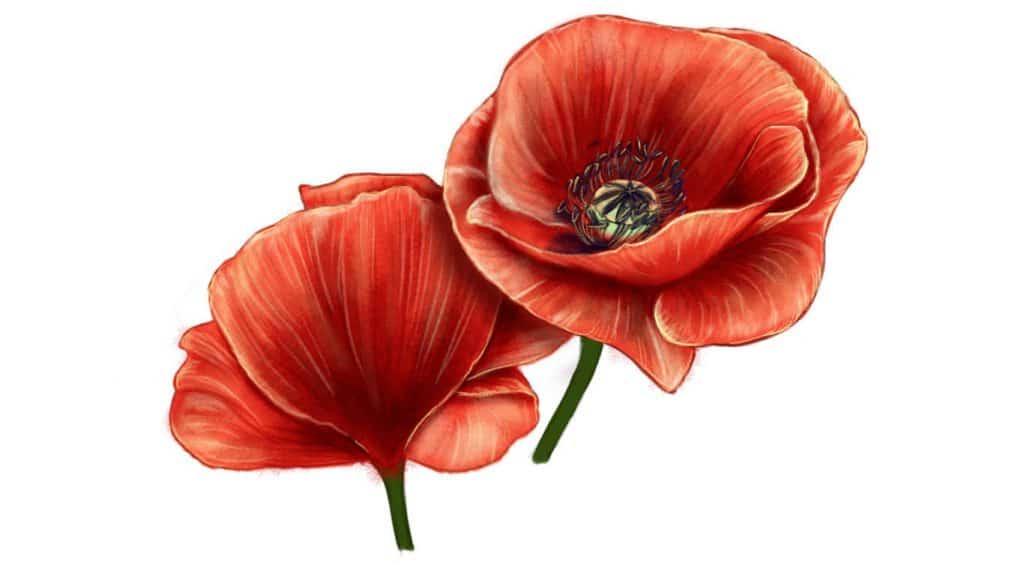The Significance of the ANZAC Poppy: A Guide for Parents and Their Little Ones
Hey there, awesome parents! Are you looking to delve into a heartfelt tradition with your young ones and give them a lesson in gratitude and history? Well, you’ve come to the right place! The ANZAC poppy is a poignant symbol that captures the essence of remembrance and respect. It’s a touching way to connect your children to the past and the sacrifices made by brave soldiers. Let’s embark on this journey of understanding together!
What is the ANZAC Poppy?
The poppy, with its vibrant red petals and black core, is not just a pretty flower; it’s a beacon of memory, a way to honor those who served in the armed forces during times of war and peacekeeping operations. The ANZAC poppy is particularly tied to the soldiers of the Australian and New Zealand Army Corps (ANZAC) who fought during World War I. It has since become a universal emblem, reminding us of all our servicemen and women’s courage.
Why is the Poppy Used as a Symbol of Remembrance?
Our story begins during one of humanity’s most challenging times – World War I. Amidst the devastation, a beautiful phenomenon occurred. The once barren battlefields, especially those of Belgium and northern France, saw an abundance of red poppies blooming. This stark contrast between the grim reality of war and the resilience of nature inspired the powerful symbolism behind the red poppy. Poppies became synonymous with life amid death, hope within despair, and the undying spirit of soldiers.
A Deeper Dive into ANZAC Day
You might wonder, “When do we especially honor the ANZACs and reflect on the importance of the poppy?” Well, my curious friends, that day would be ANZAC Day, observed on April 25th every year. It marks the anniversary of the first major military action fought by the ANZAC forces during World War I at Gallipoli, Turkey. This day transcends time, uniting us in reflection and offering a chance to educate our young ones on the profound concepts of service and sacrifice.
ANZAC Poppy Traditions for Families
Engaging in ANZAC Day traditions is a heartfelt way to teach children about this significant aspect of our heritage. Families can participate in dawn services, march in parades, or simply wear a poppy pin in solidarity. It’s a day filled with stories of heroism and an excellent opportunity for parents to instill the values of bravery, freedom, and peace in their children.
How to Explain the Importance of the ANZAC Poppy to Your Kids
Talking to children about war and remembrance can be challenging, but it’s important to approach the topic with sensitivity and honesty. You can start by sharing the story of the red poppies in the battlefields and how they represent the soldiers’ sacrifice. Reading books or watching educational shows could also help bring history to life. The conversation might take a subtle turn towards broader themes, such as the importance of peace and the meaning of commemoration. Whatever angle you choose, the aim is to foster an environment where little minds can understand the major acts of bravery and humanity.
As we navigate the poignant subject of the ANZAC poppy, let us be both gentle and truthful. We’ll explore engaging activities, touching stories, and valuable traditions to share with our children, providing them with a deep-seated appreciation for the freedoms and opportunities they enjoy today.
Feeling ready to embark on this learning adventure? Grab a comfy spot, gather the kiddos, and let’s turn the pages of history together to celebrate the timeless legacy of the ANZAC poppies—a legacy woven into the fabric of our nation and hearts. Stay tuned for more insights as we unravel the full significance of this remarkable symbol of remembrance.
Join me as we continue to dive deeper into the history, meaning, and the many ways we can engage with the commemorative ANZAC poppy. It’s a rich tale of resilience and respect, and I can’t wait to share more with you!

5 Things Parents Should Know in Preparing for ANZAC Poppy
1. Understanding the History and Significance
Before ANZAC Day approaches, it’s important for families to understand the history of the ANZAC poppy. Knowledge about the origins of the symbol helps in explaining its significance to children. Start by discussing the Gallipoli campaign and the conditions that led to the poppies being recognized as a symbol of remembrance for fallen soldiers. Acknowledging the valiant efforts of the ANZAC troops fosters a deep appreciation of the past.
2. Wearing a Poppy
Wearing a poppy is a traditional way to show respect for those who have served. It’s a powerful, visual representation of remembrance that children can easily participate in. Teach them about the proper way to wear the poppy – traditionally on the left side, close to the heart – and the reasoning behind it. This small gesture is a profound way to connect with the spirit of ANZAC Day even for the youngest of family members.
3. Participating in Commemorative Events
Attending local ANZAC Day events with your children, such as dawn services, parades or memorial services, is an immersive way to honor the day. Prior to these events, prepare your kids by discussing what they might see, hear, and experience. Familiarizing them with the order of ceremonies, such as the Last Post, a minute of silence, and the Reveille, helps them understand the proceedings and participate respectfully.
4. Crafting and Educational Activities
Engage in hands-on activities like crafting paper poppies or reading children’s books about ANZAC Day. These activities provide a creative and tangible way for children to connect with the significance of the day. You can also encourage writing letters or drawing pictures to send to current serving military members or veterans, which can personalize the concept of remembrance and gratitude.
5. Discussing Themes of Peace and Freedom
Finally, it’s vital to discuss broader themes of peace, freedom, and the importance of remembering history with your children. ANZAC Day isn’t just about recognizing the past; it’s also about understanding the value of the peace and opportunities we currently enjoy. Encourage open conversations about the costs of war and the significance of working towards a peaceful future, so that your children can appreciate the day’s relevance in today’s world.
Now that you’re equipped with these 5 key insights, you can confidently prepare your family for ANZAC Day. Each of these points offers a meaningful way to acknowledge the sacrifices made by our servicemen and women and helps to pass on the legacy of remembrance to the next generation. With a little preparation and heartfelt dialogue, you can turn ANZAC Day into a profound family tradition that honors the spirit of the ANZACs and the values for which they stood.
Remember, parents, the ANZAC poppy is more than just a flower. It’s a way for us to connect across generations, a symbol that teaches about courage, respect, and the price of the peace we cherish. So, let’s guide our children with love and wisdom and educate them about the true essence of ANZAC Day. Together, as families, we can continue to nurture the flame of remembrance, ensuring that it burns brightly for years to come.
Keep the conversation going, engage in reflection, and honor those who have given so much. Introducing the ANZAC poppy to your children is not only about teaching them a piece of history – it’s about shaping them into compassionate and mindful citizens of the world.
Embrace this opportunity to bond over such an enduring and important tradition, and let the legacy of the ANZACs inspire us all to cherish and protect the values of freedom, democracy, and peace. Let’s help our little ones understand that through remembrance, we recognize the beauty and fragility of life, just as those red poppies reminded soldiers of hope in the midst of war.
Here’s to creating meaningful memories and deep-rooted respect together. Lest we forget, let the ANZAC poppy be our guide to remembering the past while nurturing the hearts and minds of the future.
For more great fun click here. For more information see here
Disclaimer
The articles available via our website provide general information only and we strongly urge readers to exercise caution and conduct their own thorough research and fact-checking. The information presented should not be taken as absolute truth, and, to the maximum extent permitted by law, we will not be held liable for any inaccuracies or errors in the content. It is essential for individuals to independently verify and validate the information before making any decisions or taking any actions based on the articles.




